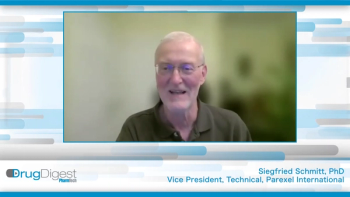
Hard Times in Washington for Generic Drugs
Even though rising production and use of generic pharmaceuticals is saving billions for the nation’s healthcare system, policy makers continue to slap the industry with policies it claims will limit product development and sales.
Even though rising production and use of generic pharmaceuticals is saving billions for the nation’s healthcare system, policy makers continue to slap the industry with policies it claims will limit product development and sales. A new
Instead, Congress recently painted generics as a factor behind rising drug prices in approving legislation that boosts Medicaid rebates for generics. Buried in the bipartisan budget bill enacted Oct. 30, 2015 to keep the federal government going is a provision that increases rebates for generics that raise prices at a rate higher than inflation. Such a price-hike penalty already applies to brand medicines, and proposals to extend it to generics are under review by the Health and Human Services (HHS) Inspector General. But the lawmakers were eager to gain the projected $1.5 billion in savings over 10 years from the added rebates and passed the measure without any discussion. The change will discourage companies from entering into specific drug classes, predicts GPhA President Chip Davis, and fewer choices will increase patient reliance on older, originator products and drive up costs.
At the same time, generic-drug firms looking to develop and market new biosimilars failed to convince the Centers for Medicare and Medicaid Services (CMS) to revise a reimbursement policy that they fear will discourage biosimilar prescribing. In late October 2015, CMS finalized its decision to assign one payment calculation and billing code for biosimilars covered by Medicare Part B, while retaining a different code for the reference product. GPhA fears that lumping all biosimilar products into a single payment calculation, separate from the reference product, will curb use and development of these less-costly therapies.
The CMS decision is a big disappointment to GPhA’s Biosimilars Council, which is pressing FDA for policies on biosimilar naming and labeling that reinforce the view of comparable safety and efficacy of the new therapies to reference products. The Council also is involved in legal disputes related to the “patent dance” established by the biosimilars legislation, a sign that brands and biosimilars are not likely to settle patent disputes without costly litigation.
GPhA also would like some help from policy makers in combating tactics used by innovator firms to block generic-drug makers from access to supplies needed to test and develop competitive therapies. Some brand manufacturers claim they can’t provide products under the limited drug distribution programs required by REMS (risk evaluation and mitigation strategies), a strategy that has delayed generic therapy development.
There’s some good news for generic-drug makers from FDA efforts to review abbreviated new drug applications (ANDAs) in a timely manner and to whittle down even more the considerable application backlog in FDA’s Office of Generic Drugs (OGD). FDA claims considerable progress on both fronts in recent months, as outlined by OGD director Kathleen (Cook) Uhl at GPhA’s fall technical conference on Nov. 2, 2015. As FDA moves into year four of its five-year program for establishing a more efficient and effective review and approval program, as outlined in the Generic Drug User Fee Act of 2012 (GDUFA), the agency is succeeding in meeting review commitments, improving agency-manufacturer communications, and making “foundational transformations” in everything related to the generic-drug industry, Uhl said. The agency is “way ahead of schedule” in addressing the application backlog, she pointed out, noting that that 82% of applications in the backlog have received “an action,” that FDA has met the goal of hiring 1000 additional staffers, and that an improved IT system has been built to handle its growing workload. But just how FDA defines “an action” troubles manufacturers, as it often means a complete response letter-not market approval.
As GPhA and FDA move forward with negotiations for reauthorizing GDUFA, all these issues will be on the table. FDA officials will be looking for added revenues from the fee program, while manufacturers are anxious to ensure that the agency is able to meet tighter review timeframes and continue to clearly communicate with industry on key policy issues as well as individual development programs.
Newsletter
Get the essential updates shaping the future of pharma manufacturing and compliance—subscribe today to Pharmaceutical Technology and never miss a breakthrough.





